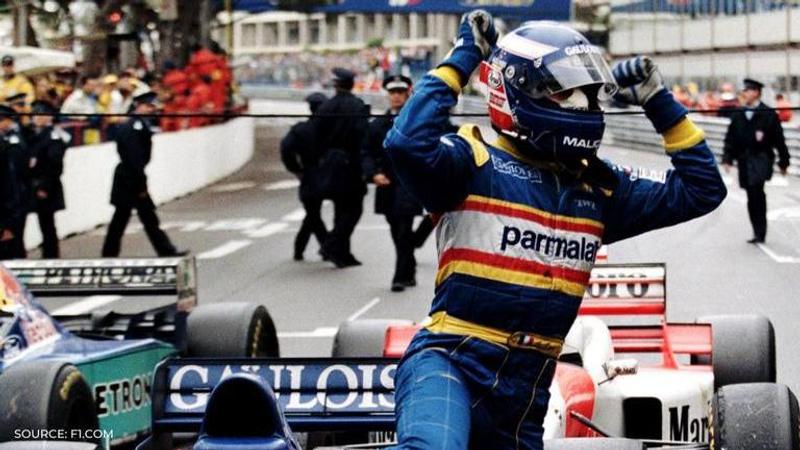Published 17:29 IST, May 19th 2021
1996 Monaco Grand Prix: The F1 race that had the least finishers
What happened at 1996 Monaco Grand Prix? The 1996 Grand Prix saw a record low of only three drivers finish the race following a bizarre day on the circuit.

Until 1996, no driver had ever won the prestigious Monaco Grand Prix from lower than eighth on the grid. French team Ligier hadn’t tasted the sweet nectar of victory in 15 years while Frenchman Olivier Panis was still searching for his inaugural Formula 1 win. However, in one of Grand Prix racing’s most extraordinary races in history, all three statistics were consigned to the bin.
Monaco Grand Prix circuit: The shortest and narrowest circuit in F1
The Monaco Grand Prix is well known as one of the most difficult races to overtake at. The street circuit’s narrow turns rarely provide any space to overtake, and so, when drivers do try to pass one another, it’s extremely tricky and dangerous. The 2.075-mile ribbon of winding and undulating tarmac is Formula One's shortest and narrowest circuit. However, in 1996, it also made history for being the circuit in which the fewest drivers completed the race.
What happened at 1996 Monaco Grand Prix? 1996 Monaco Grand Prix result
During the qualifying round, Michael Schumacher had taken pole position but the German caused controversy on his slowing down lap when he impeded Gerhard Berger right at the end of the session. On race day, Olivier Panis was the fastest in the warm-up while Jacques Villeneuve was 18th after running a wet set up in preparation for the expected rain. Between the warm-up session and the race, heavy rain fell at the circuit, and an additional 15-minute session was added to allow the drivers to get used to the changed conditions as it was the first time rain had fallen over the race weekend.
Several drivers went off during the session, including Pedro Lamy, Pedro Diniz and Giancarlo Fisichella, but all continued. The only two drivers to escape with damage were Mika Hakkinen and Andrea Montermini. During the warm-up session, Montermini crashed his Forti coming out of the tunnel, and the team's lack of a spare car meant the Italian was unable to start, leaving 21 cars on the grid. The race began but the track was wet which led to cars sliding into the barriers or succumbing to mechanical failures.
Schumacher fell victim to the slippery track as his Ferrari slid into the barriers in the first lap itself. After five laps, there were only 13 cars remaining as Ukyo Katayama (accident), Ricardo Rosset (accident) and Diniz (transmission) retired. Alesi then led for 20 laps, before his suspension failed, handing the lead to Panis. On lap 31, Martin Brundle spun off, which left only 11 cars in the race. Luca Badoer was running six laps down in the Forti when he collided with Villeneuve at Mirabeau on lap 66, retiring both drivers.
The race did not run its full distance as the two-hour time limit came into effect. Panis was leading David Coulthard by a small margin with only five other cars behind them. Irvine spun at the same point that his teammate Schumacher had crashed, and as he tried to rejoin, he was hit by Mika Salo, who was in turn hit by Hakkinen. All three cars retired, leaving only four cars circulating, with Frentzen running last. The last-placed German then decided to pull into the pits on the final lap as he was running last anyway, and everyone else had already seen the checkered flag.
This led Panis to his first and only Grand Prix, taking Ligier's first win in 15 seasons. Frentzen, Salo and Hakkinen were classified in the final points positions with Irvine credited with seventh place.
Michael Schumacher health update: How is Michael Schumacher now?
Michael Schumacher retired from the F1 scene nearly a decade ago. However, he sustained a severe head injury while skiing on holiday in the Swiss Alps in 2013. He was then placed in a medically induced coma until June 2014.
Schumacher then left the hospital for further rehabilitation at the University Hospital of Lausanne, before being relocated to his home to receive medical treatment and rehabilitation privately in September 2014.
Image Credits - F1.com
Updated 17:29 IST, May 19th 2021




